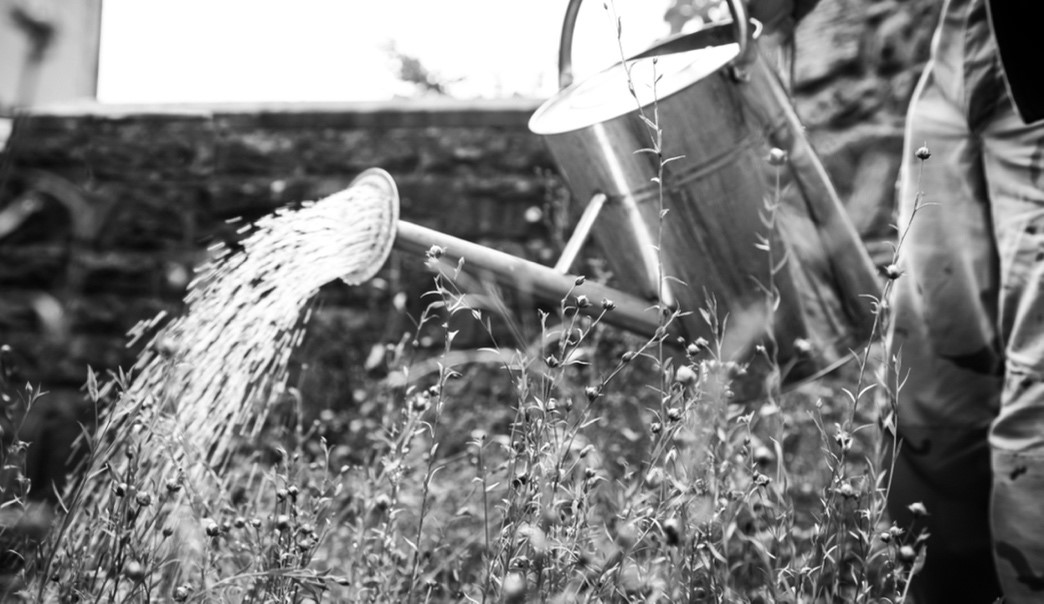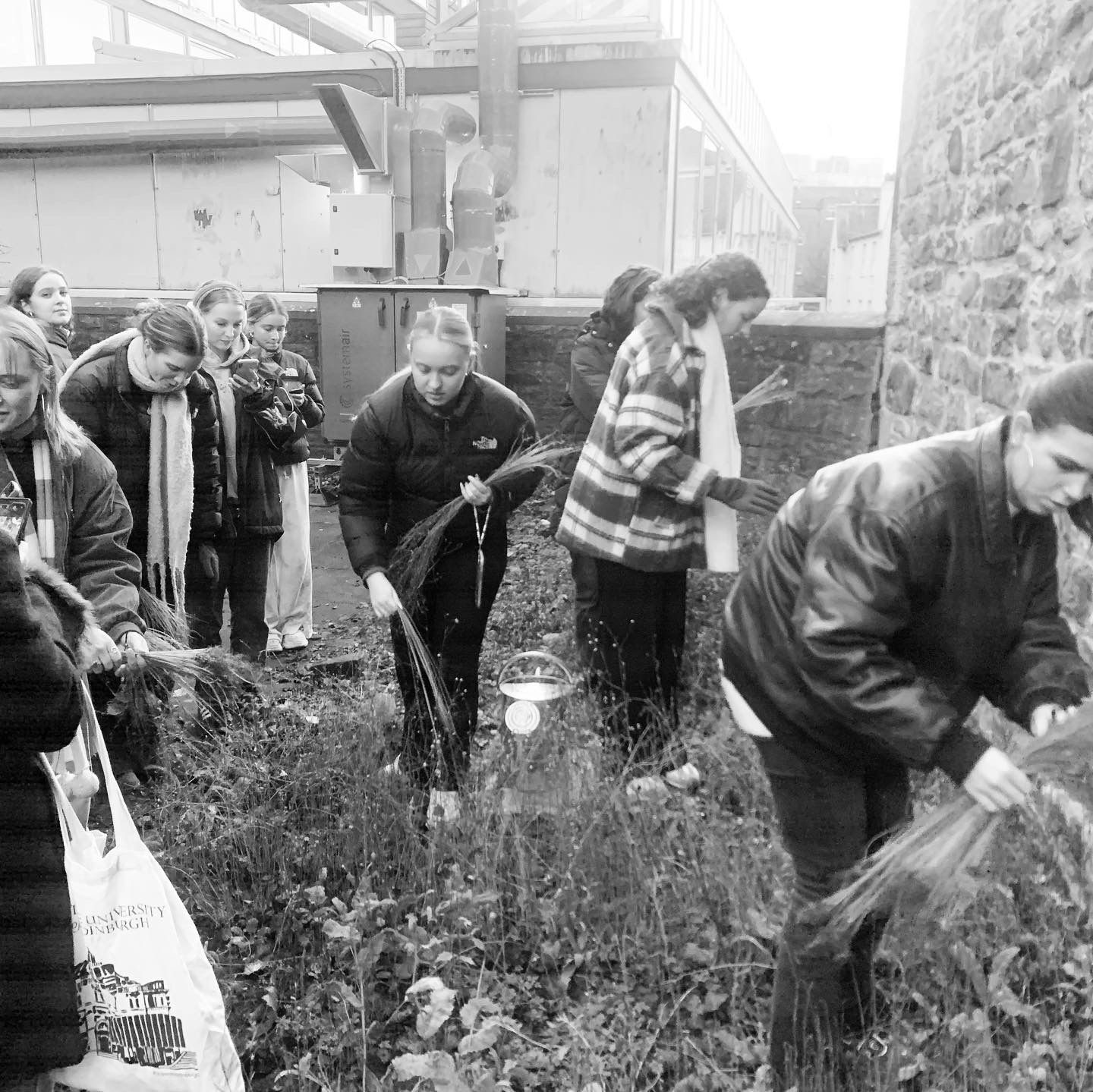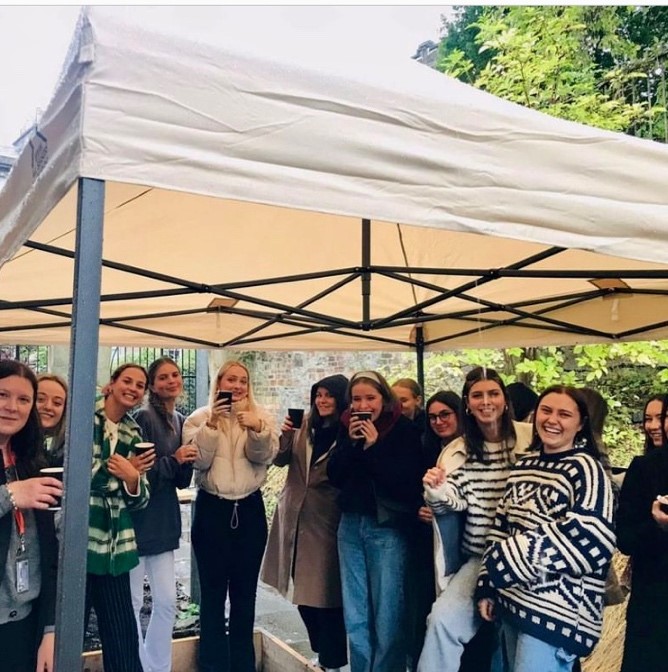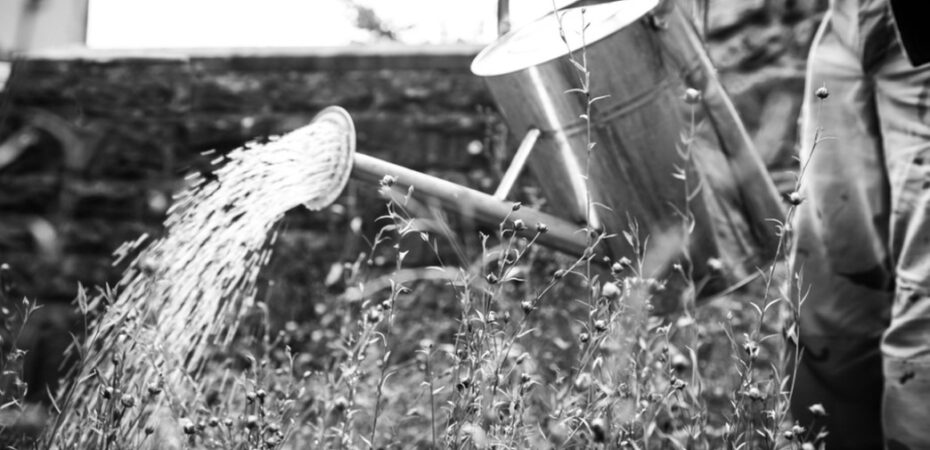
In this post, Niki Taylor, a Lecturer at the Edinburgh College of Art’s Textiles Department, tells us about her research project of growing flax to make linen in collaboration with her third and fourth year students. This project was made possible thanks to funding from the Student Partnership Agreement Fund. This post belongs to the Hot Topic series: Student Partnership Agreement 2023↗️.
At the start of 2023, the Textiles Department at Edinburgh College of Art were awarded funding from the Student Partnership Agreement Fund. It was a very exciting start to the year, and one that keeps giving!
In 2021, the Textiles’ Department had been on the lookout for a space to grow Flax to make linen through a research project called Seed-Ed (@_seed_ed on Instagram). We were given some space near The Vennel from the Estates Department. It was an unused and unseen plot that was derelict as the weeds had been sprayed with weed killer. We immediately saw the opportunity to get our students outdoors and more connected to nature – to better understand where our textiles come from and empower them to grow their own! To enhance community wellbeing, sustainability, creating healthier soils and minds whilst building greater biodiversity and knowledge around nature and its connection to textiles and the clothes we wear.

Following initial conversations with the students on what they would like to do with the plot, there was a lot of excitement and creative ideas generated on how we could use the space: from growing, gardening and making textiles to having social events, based around the growing seasons, growing indigenous local plants, to draw, eat and dye with!

Post-pandemic, students felt the need to have study breaks, to get out of the studio and into nature. They expressed a desire to take mental health breaks, from study, work or the studio and time to think and reflect. They had experienced the well-being and health benefits that textiles can bring, the meditative and slow pursuit of making and drawing. So, to combine all these elements was a win-win situation.
We would all like to bring community and conversation together. To reach out beyond our department and for students to meet and share across disciplines and colleges. The students felt strongly about opening up the space to share with friends and to welcome community, where they could meet other students around textiles,
Challenges
There have been a few challenges along the way, mostly relating to time and spending the funding in the most sustainable way. It took us a lot longer than we had imagined to buy our equipment, soil and seeds from the most sustainable suppliers, sourcing a lot from smaller independent suppliers who weren’t always in the University’s system.
Finally, once we had benches, soils, seeds and summer weather in place, we realised that the students had finished their semester. Nature and the growing seasons didn’t exactly sync with university semester schedule! We have learnt, though, to be patient and to work at a slower and more flexible pace, as nature intends.
Highlights
This process has given us lots of learning opportunities; for us to realise that nature takes it time and to learn how to better work with it. This is a slow but very nurturing project. I has taught us to slow down, work with the seasons, question how we can move away from using chemicals within our processes and at speeds relating to industrial practices. How we can take climate action in caring, sharing and nurturing our soils and university community?
Learning alongside the students has been very fulfilling! The conversations with students have inspired our teaching within the department. Last semester, we incorporated a flax to linen project and a natural dye project that the students were keen to learn following our planning of the dye garden.
It has really encouraged community, peer-to-peer learning and centering students’ voices. It has encouraged greater communication, an openness in discussion and broken down barriers. Furthermore, it encouraged creativity and fun together as a collective.
Through the slower start to the garden than we had initially planned, we were rewarded by nature; indeed by the soil a rest, an abundance of plants and flowers grew! There were thistles, beautiful giant purple poppies, wildflowers. We even discovered some established trees, such as elderflower!
Following the purchase of our equipment, tables, benches and marquee, we welcomed our students back onto campus with our first event in September. It was a dreich, typically Scottish day, but we gathered together, sheltering, chatting and laughing with hot chocolates, teas and cakes to celebrate and launch the garden! Our, now, fourth year students met with the third years to share the garden and pass on the baton. It has been lovely to hear the students reminiscing about the event and planning more to come.

In the spring we are looking forward to encouraging the greater community to join us for more planting, garden maintenance, drawing, workshops and events down at The Vennel. Please do get in touch if you are interested in joining our textile dye garden community.
Niki Taylor
Niki is a Lecturer in Textiles, at Edinburgh College of Art.


